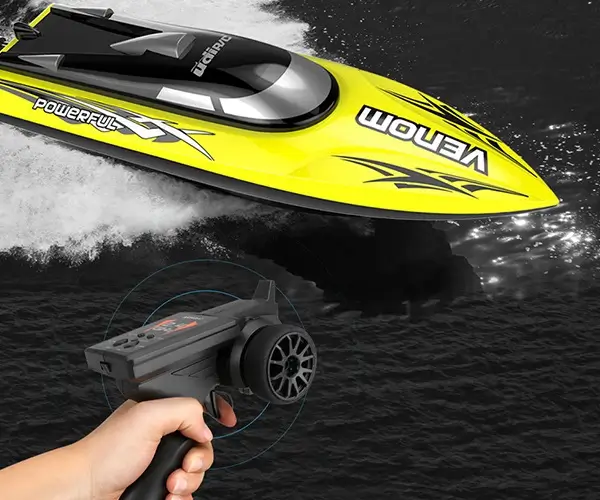part 1:
Unleashing Precision and Power: The Ultimate Guide to Geared Stepper Motors
In the world of automation, robotics, and precision machinery, few components have revolutionized control and movement quite like the geared stepper motor. Combining the reliable movement of a traditional stepper motor with the added benefits of gear reduction mechanisms, geared stepper motors have become a cornerstone for many industrial and research applications. From tiny medical devices to massive manufacturing robots, these specialized motors offer a unique blend of accuracy, torque, and adaptability, making them essential in scenarios that demand meticulous control and unwavering performance.

The Basics of Stepper Motors Before diving into the specifics of geared variants, it’s crucial to understand what a standard stepper motor does. At its core, a stepper motor converts electrical pulses into discrete mechanical movements—steps. Each pulse results in a fixed rotation angle, giving precise control over position without the need for feedback systems like encoders. This inherent open-loop control capability has made stepper motors popular in 3D printers, CNC machines, and laser cutters.
However, standard stepper motors can struggle when it comes to delivering high torque at high speeds or maintaining accuracy when faced with mechanical loads. This is where geared stepper motors step into the spotlight. By adding a gear train—often a planetary or worm gear reducer—they extend the motor's capabilities significantly.
Why Gear Reduction Matters Imagine trying to turn a particularly stubborn door handle with your bare hand—turning it swiftly might require a lot of effort, but if you use a lever or a gear system, that same effort can generate a much higher output torque with less strain. This analogy beautifully explains the principle behind gear reduction mechanisms in motors.
In the context of stepper motors, gears serve to reduce the speed of the motor's shaft while amplifying the torque output. This means a geared stepper can handle heavier loads, operate at slower, more precise speeds, and improve positional accuracy. Gear reduction acts as a force multiplier—making it possible for a small motor to move large loads with precision.
Types of Gear Trains in Geared Stepper Motors There are several types of gear trains used in these motors, each suited for different applications:
Planetary Gears: These are compact, high-efficiency gear systems where multiple gears revolve around a central gear ('sun gear') within a casing ('planet carrier'). They provide high reduction ratios in a small package, often resulting in smooth, quiet operation—ideal for robotics and medical devices.
Worm Gears: Featuring a screw-like gear (the worm) engaging with a gear wheel (the worm wheel), worm gears provide significant gear reduction in a compact design. They are self-locking and excellent for applications where holding the position without power is needed, such as in positioning stages or safety brakes.
Spur and Helical Gears: These are commonly found in less space-constrained designs. Spur gears are simple and efficient, while helical gears offer smoother operation and less noise—but typically take up more space.
Each gear type offers distinct advantages, and choosing the right one depends on factors such as desired torque, speed, size, noise level, and load characteristics.
Advantages of Geared Stepper Motors The integration of gears into stepper motor assemblies unlocks numerous benefits:
Enhanced Torque Output: Gear reduction amplifies the motor's torque, allowing it to move heavier loads or maintain position against external forces. This is especially critical in robotics, where precise movements of arms and joints depend heavily on sufficient torque.
Improved Positioning Accuracy: By reducing the rotation per step, gear trains enable extremely fine positional control—sometimes achieving micro-stepping precision. For high-precision applications like camera focusing or laboratory automation, this is invaluable.
Low-Speed Operation: Stepper motors are most efficient and accurate at low speeds. Gearing maintains these benefits while providing the power needed for demanding tasks—enabling slow, controlled movements without sacrificing accuracy.
Reduced Vibrations and Noise: High-quality gear trains can absorb some mechanical vibrations, leading to quieter operation. This is particularly beneficial in environments where noise reduction is essential, like medical or laboratory settings.
Extended Motor Life: Distributing mechanical stress through gears can reduce wear and tear on the motor itself, increasing its operational lifespan, especially in continuous-duty applications.
Applications in Modern Industry Geared stepper motors are the workhorses behind many cutting-edge systems:
Robotics: Precise joint movement, gripper control, and camera positioning all rely on the torque and accuracy provided by geared stepper motors.
3D Printing and CNC Machines: Fine control over axes during complex cuts or detailed printing requires the micro-stepping capabilities and high torque of geared motors.
Medical Equipment: MRI machines, surgical robots, and laboratory automation systems depend on reliable, precise movement—often achieved with geared stepper solutions.
Industrial Automation: Assembly lines, conveyor systems, and packaging equipment benefit from the durability and strength of geared motors.
Aerospace and Defense: When handling delicate instruments or precise targeting systems, the combination of accuracy and power in geared stepper motors is a decisive advantage.
Choosing the Right Geared Stepper Motor Selecting a geared stepper motor involves considering several key parameters:
Torque Requirements: Determine the load and external forces to ensure the motor-gear combination provides ample torque.
Speed and Step Resolution: Balance desired operational speed with necessary positional accuracy—more reduction means finer control but lower maximum speeds.
Size Constraints: Gearing adds to the overall motor size; design space may limit options.
Environmental Factors: Conditions such as temperature, dust, moisture, and vibration influence gear material choice and enclosure design.
Power Consumption and Efficiency: Gears introduce some losses, so overall system efficiency must be considered.
With technological advancements, some geared stepper motors now feature integrated gearboxes and modular designs, making customization and integration easier.
This wraps up the first part of our comprehensive exploration of geared stepper motors. Next, in part two, we'll delve into more technical insights, emerging trends, and selecting the best gearing solutions for diverse applications.
Established in 2005, Kpower has been dedicated to a professional compact motion unit manufacturer, headquartered in Dongguan, Guangdong Province, China.




































